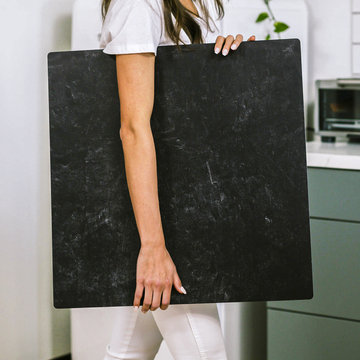Lighting is the secret ingredient in every mouthwatering food photo, but there’s more to it than just brightness, color temperature, or grabbing the latest “high CRI” LED. If you’re a creator obsessed with getting your food shots to look as good as they taste, it’s time to dig into a lesser-known - but essential - topic: the spectral quality of your LEDs.
What sets truly great food photography apart isn’t just the camera or styling. It’s understanding how the unique spectrum of your LED lights can make that strawberry tart leap off the screen - or make it look unexpectedly dull and lifeless. Unlocking this superpower goes far beyond the obvious. Let’s explore why.
The Science of Spectrum: Why CRI Isn’t the Whole Story
When shopping for LEDs, we’re conditioned to check for CRI (Color Rendering Index) numbers. But here’s the catch: two LED panels with the same CRI can still produce wildly different results with food photography. That’s because CRI is a basic average that hides a world of complexity-and potential problems.
LED manufacturers fine-tune their lights using phosphors to hit “acceptable” white. But food is a riot of color: ruby reds, leafy greens, golden crusts. If your light source is missing certain wavelengths-say, deep reds or vivid greens-those hues can vanish or take on muted, artificial tones in your images, no matter how advanced your camera or your editing skills.
- Tomatoes can photograph flat, not juicy red
- Herbs might lose their vibrant freshness
- Steaks and cured meats can turn grayish
For those who want to look even deeper, check if a light’s data sheet includes TM-30-20 or individual “R” values like R9 (deep reds). This next-generation rating divides the spectrum into precise color bins, revealing whether your LED genuinely honors the full palette of real food.
LEDs Shape Texture - Not Just Color
Here’s a pro insight almost no one discusses: good spectral quality isn’t just about color. It dramatically affects texture. The micro-contrasts that make a croissant flaky or ice cream creamy can disappear if the light glosses over essential wavelengths.
When key wavelengths are missing, the result is a strange flatness on food surfaces. Smooth becomes plastic; gloss can look greasy; delicate flakes simply vanish into the background. And once those details are missing, even the finest retoucher can’t bring them back in post-production.
Level Up Your Light: How to Choose Food Photography LEDs Like a Pro
- Ask for spectral data, not just CRI. Some brands catering to professional markets will provide SPD (Spectral Power Distribution) graphs. Look for balanced output across the visible spectrum, from 400 to 700nm.
- Run a “tough colors” test. Photograph a mixed plate: tomatoes or red meats, green herbs, blueberries, and pale crusts. Compare them next to shots in natural window light. Unedited, which look truest and most appetizing?
- Prioritize R9 & R12 scores. These show how an LED performs on rich reds and yellow-greens-the colors most likely to go off under ordinary LEDs.
- Try tunable or full-spectrum LEDs if you can. Some high-end panels let you tweak not just color temperature, but the whole spectral curve. Yes, these can be pricier, but the realism is unmistakable.
- Dare to experiment. If you’re a true lighting nerd, grab a simple USB spectrometer and build your own test library. You’ll quickly discover how different each light truly is-and why.
Spectrum: The Secret Weapon for Creators
Whether you’re running a bustling bakery on Etsy or styling content for your own home café, spectral quality is your not-so-secret weapon. Instead of relying on marketing slogans or sticking to the status quo, demand better from your lighting-your food deserves it!
Every rich hue and fine texture captured in-camera is one less battle to fight in editing. Dive deeper into your lighting choices and watch your photos stand out in saturated marketplaces and hungry Instagram feeds.
If you’ve compared different LEDs yourself or run side-by-side spectrum tests, drop your findings in the comments! Want a free food color/shade reference chart to test your own lights? Let me know and I’ll send one your way.
Light with intent. Shoot with flavor. Your viewers-and your appetite-will thank you.



